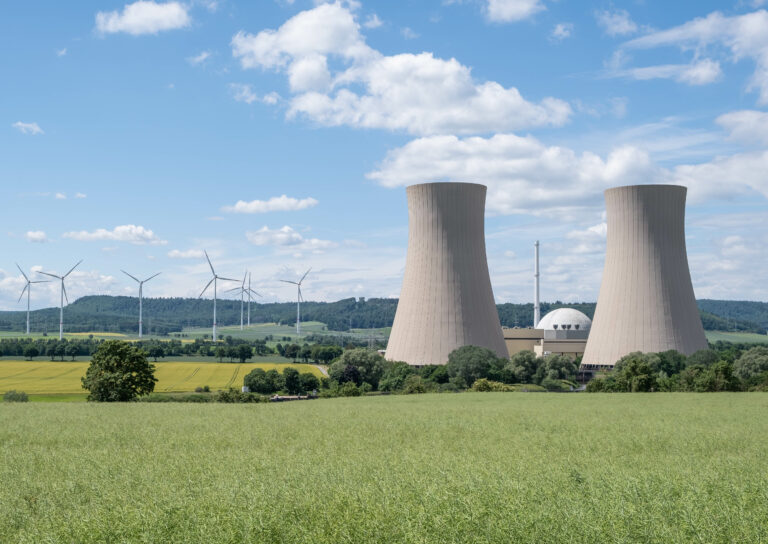Understanding and calculating greenhouse gas (GHG) emissions is no longer a task limited to large businesses. Even smaller organisations, which may not meet the criteria for compliance schemes like the Energy Savings Opportunity Scheme (ESOS) or Streamlined Energy and Carbon Reporting (SECR), are now feeling the pressure.
This shift is largely driven by supply chain dynamics. Larger organisations calculating and setting targets for their Scope 3 emissions are increasingly requiring their suppliers to provide emissions data.
If you’ve found yourself fielding such requests and feeling unsure where to start, this quick guide will help you!
What are Scope 1, 2 and 3 emissions?
- Scope 1 (Direct emissions): These are emissions from sources directly controlled by your organisation, such as company-owned vehicles or on-site fuel combustion.
- Scope 2 (Indirect emissions from energy): These include emissions from the production of electricity, heat, or steam purchased and consumed by your organisation.
- Scope 3 (Other indirect emissions): These are emissions resulting from the organisation’s value chain, such as employee commuting, waste disposal, and supply chain activities.
How to calculate your emissions?
We’ve broken down the mechanics of calculating your emissions into four steps.
Step 1: Collect your data
- For Scope 1:
- Record fuel consumption for company-owned vehicles and on-site equipment.
- Include fugitive emissions, such as leaks from refrigeration or air conditioning units.
- For Scope 2:
- Gather electricity usage from utility bills, noting total kilowatt-hours (kWh).
- Include data for purchased heat or steam if applicable.
- For Scope 3:
Scope 3 emissions are difficult to measure due to their nature of being indirect emissions that occur from sources outside of your control. Conduct a mapping exercise to understand the focus on relevant areas for your organisation and set up procedures to measure:
- Employee commuting.
- Business travel.
- Supplier emissions (seek data from suppliers where possible).
Step 2: Apply emission factors
Convert activity data into emissions using published emission factors. Reliable sources include:
- Department for Energy Security and Net Zero (DESNZ)
- The Greenhouse Gas Protocol
- The US Environmental Protection Agency (EPA)
For example, to calculate emissions from natural gas usage, multiply the volume of gas used by the emission factor for CO2e.
Step 3: Calculate total emissions
Use the formula:
Emissions (CO2e) = activity data × emission factor
Step 4: Compile and analyse your results
Combine emissions data into a report categorised by scope and source. This will help you identify hotspots and areas for improvement.
Why this matters
Calculating your emissions isn’t just about compliance with carbon reporting requirements or retaining your status as a trusted supplier, it’s a vital step towards sustainability.
By understanding your carbon footprint:
- You can respond confidently to supply chain enquiries and retain your status as a trusted supplier.
- You’ll be better equipped to set reduction targets and identify opportunities for efficiency.
- You’ll demonstrate environmental responsibility, which can strengthen relationships with partners and customers and help employee retention.
Need help? We’re here to support you.
Measuring, calculating, and reporting your Scope 1, 2, and 3 emissions can be daunting, especially if you’re new to greenhouse gas (GHG) reporting or juggling competing priorities. Here’s why it can feel like such a challenge:
- Complex data requirements: Gathering data from multiple sources can be overwhelming, particularly when suppliers lack key emissions information or are unwilling to share it.
- Lack of technical expertise: Generating reliable data requires statistical knowledge and familiarity with emissions calculations.
- Multiple frameworks: With no universal approach for certain emissions and multiple calculation methods, it’s easy to feel lost.
- Evolving standards: Keeping up with ever-changing reporting requirements, measurement methodologies, and disclosure standards can be a full-time job.
- Cost concerns: Measuring and calculating emissions can be a significant financial burden.
If this resonates with you, our team of Sustainability experts is here to help. With experience in carbon reporting and up-to-date knowledge of regulations, we can guide you through every step of the process.
Start by exploring our 2023 Greenhouse Gas Report, prepared by the Zenergi team. It includes a breakdown of the different scopes and categories, emissions and exclusions which may simplify the approach and process.
Alternatively, contact us now to accelerate your journey toward a more sustainable future.














